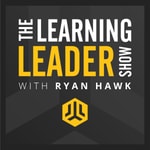Outside/In – Details, episodes & analysis
Podcast details
Technical and general information from the podcast's RSS feed.

Outside/In
NHPR
Frequency: 1 episode/10d. Total Eps: 347

Recent rankings
Latest chart positions across Apple Podcasts and Spotify rankings.
Apple Podcasts
🇨🇦 Canada - naturalSciences
28/07/2025#10🇨🇦 Canada - science
28/07/2025#87🇬🇧 Great Britain - naturalSciences
28/07/2025#20🇩🇪 Germany - naturalSciences
28/07/2025#85🇺🇸 USA - naturalSciences
28/07/2025#12🇺🇸 USA - science
28/07/2025#64🇫🇷 France - naturalSciences
28/07/2025#57🇨🇦 Canada - naturalSciences
27/07/2025#9🇨🇦 Canada - science
27/07/2025#83🇬🇧 Great Britain - naturalSciences
27/07/2025#51
Spotify
No recent rankings available
Shared links between episodes and podcasts
Links found in episode descriptions and other podcasts that share them.
See all- https://www.instagram.com/p
11467 shares
- https://www.instagram.com/outsideinradio
160 shares
- http://freesound.org
719 shares
- https://www.civics101podcast.org/
331 shares
- https://outsideinradio.org/
326 shares
- https://twitter.com/maddie_sofia
84 shares
- https://twitter.com/OutsideInRadio
82 shares
RSS feed quality and score
Technical evaluation of the podcast's RSS feed quality and structure.
See allScore global : 53%
Publication history
Monthly episode publishing history over the past years.
The $1,000 balloon
jeudi 5 septembre 2024 • Duration 36:53
Helium is full of contradictions. It’s the second most abundant element in the universe, but is relatively rare on Earth. It’s non-reactive, totally inert—yet the most valuable helium isotope is sourced from thermonuclear warheads.
And even though we treat it as a disposable gas, often for making funny voices and single-use party balloons, our global supply of helium will eventually run out. That’s because, at a rate of about 50 grams per second, this non-renewable resource is escaping the atmosphere for good.
In this edition of The Element of Surprise, our occasional series about the hidden histories behind the periodic table’s most unassuming atoms, we examine the incredible properties and baffling economics of our most notable noble gas.
Featuring Anjali Tripathi and William Halperin.
SUPPORT
Outside/In is made possible with listener support. Click here to become a sustaining member of Outside/In.
Subscribe to our newsletter to get occasional emails about new show swag, call-outs for listener submissions, and other announcements.
Follow Outside/In on Instagram or join our private discussion group on Facebook.
LINKS
Read John Paul Merkle’s petition arguing to change the name of helium to “helion.”
Despite being about a quarter century old, this passage from “The Impact of Selling the Federal Helium Reserve” has a pretty comprehensive list of the uses and properties of helium.
More on the recent sale of the Federal Helium Reserve (NBC News)
Physicist William Halperin said the idea of mining helium-3 on the moon was… unlikely… but that hasn’t stopped this startup company from trying it. (Wired)
Want to learn more about the weird history of American airships? Check out this film produced by the U.S. government in 1937, when they were still hoping to keep our airship program afloat.
CREDITS
Host: Nate Hegyi
Reported, produced, and mixed by Taylor Quimby
Editing by Rebecca Lavoie, with help from Marina Henke and Justine Paradis
Our staff includes Felix Poon
Executive producer: Taylor Quimby
Rebecca Lavoie is NHPR’s Director of On-Demand Audio.
Music by Blue Dot Sessions and Ryan James Carr.
Outside/In is a production of New Hampshire Public Radio
Submit a question to the “Outside/Inbox.” We answer queries about the natural world, climate change, sustainability, and human evolution. You can send a voice memo to [email protected] or leave a message on our hotline, 1-844-GO-OTTER (844-466-8837).
WIN A NEW CAR OR 25K IN CASH DURING NHPR'S SUMMER RAFFLE! GET YOUR TICKETS HERE.
Why we get scared—and why we like it
jeudi 29 août 2024 • Duration 35:53
Jack Rodolico knows exactly what scares him. Sharks.
But here’s what he doesn’t get: if he’s so freaked out, why can’t he stop incessantly watching online videos of bloody shark attacks?
Why would he deliberately seek out the very thing that spooks him?
To figure it out, Jack enlists the help of other scaredy-cats: our listeners, who shared their fears about nature with us. Together, Jack and the gang consider the spectrum of fear, from phobia to terror, and what it might mean when we don’t look away.
Featuring Lauren Passell, Arash Javanbakht, Nile Carrethers, and Sushmitha Madaboosi.
This episode originally aired in October 2022.
SUPPORT
Outside/In is made possible with listener support. Click here to become a sustaining member of Outside/In.
Subscribe to our (free) newsletter for occasional merch drops and updates.
Follow Outside/In on Instagram or Twitter, or join our private discussion group on Facebook.
LINKS
Lauren Passell’s Podcast the Newsletter.
Related: why people love horror movies.
The ubiquity of smartphones means plenty of hair-raising amateur videos of shark attacks to get you started on your doomscrolling (warning: a couple of these are bloody).
If this image of an octopus freaks you out, you might share Lauren’s “fear of holes,” or trypophobia.
Learn more about augmented reality technology and other projects at Arash Javanbakht’s clinic.
CREDITS
Host: Nate Hegyi
Reported and produced by Jack Rodolico
Mixed by Taylor Quimby
Edited by Taylor Quimby, with help from Justine Paradis, Felix Poon, Nate Hegy, and Jessica Hunt.
Executive producer: Rebecca Lavoie
Music for this episode by Silver Maple, Matt Large, Luella Gren, John Abbot and Blue Dot Sessions.
Thanks to everyone who sent in voicemails and memos, even the ones we didn’t play: Erin Partridge, Lauren Passell, Nile Carrethers, Michelle MacKay, Alec from Nashville, and Hillary from Washington.
Our theme music is by Breakmaster Cylinder.
Outside/In is a production of New Hampshire Public Radio.
WIN A NEW CAR OR 25K IN CASH DURING NHPR'S SUMMER RAFFLE! GET YOUR TICKETS HERE.
The Potato Show
jeudi 27 juin 2024 • Duration 35:08
Consider the potato.
The typical potato is not all that pretty. They can be beige and lumpy, dusty and speckled, and on top of that, they even sprout alien-like tentacles. Further, no one really knows what to make of the potato. Is it a vegetable, or so starchy that we should really consider it a grain?
It’s time for answers. The Outside/In team ventures into the potato patch and presents three stories on this “fifth most important crop worldwide.”
Part 1: An artist vaults the humble potato to luxury status.
Part 2: A deliberation on the potato’s true place in the food pyramid – or, that is, on “MyPlate.”
Part 3: When his mom was diagnosed with cancer, producer Felix Poon’s dad found a way to help her: fresh-squeezed potato juice.
Featuring Laila Gohar, Kristina Peterson, and Paul Poon.
SUPPORT
Outside/In is made possible with listener support. Click here to become a sustaining member of Outside/In.
Follow Outside/In on Instagram or join our private discussion group on Facebook.
Subscribe to our newsletter for occasional updates and special announcements.
LINKS
Laila Gohar wrote about her potato party, and the Marie-Antoinette-era rebrand of the potato, in her column for the Financial Times.
For more details on the French pharmacist who transformed the potato’s image, check out this Atlas Obscura piece.
For a vinegary and vegetable-forward potato salad, Justine recommends this recipe from the great Deb Perelman.
Taylor recommends these vegan Bombay potatoes and peas (this is the closest recipe he could find online to the book recipe he uses at home).
Felix recommends trying Sichuan stir-fried potatoes from an authentic Sichuan Chinese restaurant if you haven’t had it before, and then give this Woks of Life recipe a try.
If you find yourself near the U.S.-Mexico border, Nate recommends you try some carne asada fries. Here’s a good recipe if you want to try them at home.
CREDITS
Host: Nate Hegyi
Reported and produced by Nate Hegyi, Justine Paradis, and Felix Poon
Mixed by Nate Hegyi, Justine Paradis, and Felix Poon.
Editing by Executive Producer Taylor Quimby
Rebecca Lavoie is NHPR’s Director of On-Demand Audio
Our intern is Catherine Hurley.
Music by Blue Dot Sessions and Patrick Patrikios.
Our theme music is by Breakmaster Cylinder.
Outside/In is a production of New Hampshire Public Radio
Submit a question to the “Outside/Inbox.” We answer queries about the natural world, climate change, sustainability, and human evolution. You can send a voice memo to [email protected] or leave a message on our hotline, 1-844-GO-OTTER (844-466-8837).
Episode art courtesy of Laila Gohar.
WIN A NEW CAR OR 25K IN CASH DURING NHPR'S SUMMER RAFFLE! GET YOUR TICKETS HERE.
Yardwork: Lawn and Order
jeudi 11 août 2022 • Duration 27:10
Welcome to Yardwork, a summer yard and garden miniseries from Outside/In. We’re sharing three stories about our relationships with the land around us: the front yard, the backyard, and down the block. This is part one.
Americans love a lawn. Green grass grows everywhere: on baseball fields, in backyards, in front of strip malls. Collectively, we spend billions of dollars every year keeping them fertilized and watered.
But lawns cost more than money in Western states like Utah. Despite a severe drought, residents of Utah’s towns and cities use more water per capita than any other place in the nation, and a majority of that water goes right into lawns. That’s helping fuel an environmental disaster that could wipe out one of America’s largest inland seas.
In part one of Yardwork, we trace the 600-year history of lawns, explore how they became a symbol of power, wealth, and Whiteness in America, and share tips on how to make a yard more environmentally responsible.
Featuring: Malin Curry, Ira Curry, Kelly Kopp, Zach Frankel, Karen Stenehjel
SUPPORT
Outside/In is made possible with listener support. Click here to become a sustaining member of Outside/In.
Subscribe to our FREE newsletter.
Follow Outside/In on Instagram or Twitter, or join our private discussion group on Facebook
LINKS
Check out Malin Curry’s essay on the history of Black Americans and yard work.
To read more about how agriculture and outdoor watering is contributing to the disappearance of the Great Salt Lake, take a look at these two studies.
ProPublica published an excellent investigation into why one of the West’s driest states often rejects aggressive water conservation efforts.
For some great history on lawns, read Paul Robbins’ Lawn People and Virginia Scott Jenkins’ The Lawn: A History of an American Obsession
CREDITS
Host: Nate Hegyi
Reported and produced by Nate Hegyi
Editing by Taylor Quimby
Additional editing help from Justine Paradis, Felix Poon, Rebecca Lavoie and Jessica Hunt.
Rebecca Lavoie is our Executive Producer
Special thanks to Sherry Lund, Zach Renstrom, Karry Rathje and Ken Fox.
Music for this episode by Walt Adams, Sture Zetterberg, OTE, Headlund, Roy Edwin Williams, El Flaco Collective, Pulsed, Jimmy Wahlsteen, Both Are Infinite, Airae, and Alfie-Jay Winters.
Our theme music is by Breakmaster Cylinder.
Outside/In is a production of New Hampshire Public Radio
WIN A NEW CAR OR 25K IN CASH DURING NHPR'S SUMMER RAFFLE! GET YOUR TICKETS HERE.
The most successful species on Earth?!
jeudi 28 juillet 2022 • Duration 31:28
Humans have had an impressive run thus far; we’ve explored most of the planet (the parts that aren’t underwater anyway), landed on the moon, created art and music, and some pretty entertaining Tik Toks.
But we’ve survived on the planet for just a fraction of the time horseshoe crabs and alligators have. And we’re vastly outnumbered by many species of bacteria and insects.
So what is the most successful species on Earth? And how do you measure that, anyway?
From longevity, to happiness, to sheer numbers, we put a handful of different organisms under the microscope in hopes of better understanding what exactly it means to succeed at life on a collective and individual scale.
Featuring: Stephen Giovannoni, Rashidah Farid, and Steward Pickett
SUPPORT
Check out Stephen Giovannoni’s paper: “SAR11 Bacteria: The Most Abundant Plankton in the Oceans”
An interesting treatise on adaptability: “Why crocodiles still look the same as they did 200 million years ago”
From the NSF: “The most common organism in the oceans harbors a virus in its DNA”
More food for thought: “The non-human living inside you"
CREDITS
Host: Nate Hegyi
Reported and produced by: Taylor Quimby
Editing by: Nate Hegyi, Rebecca Lavoie
Additional editing help from Justine Paradis, Felix Poon, and Jessica Hunt.
Rebecca Lavoie is our Executive Producer
Special thanks to everybody who answered our question at the top of the show: Josemar Ochoa, m Carey Grant, Butter Wilson, Tim Blagden, Robert Baker, Sheila Rydel, and Bob Beaulac.
Music for this episode by Blue Dot Sessions, and Jules Gaia
Our theme music is by Breakmaster Cylinder.
Outside/In is a production of New Hampshire Public Radio
WIN A NEW CAR OR 25K IN CASH DURING NHPR'S SUMMER RAFFLE! GET YOUR TICKETS HERE.
The National Park Service
jeudi 21 juillet 2022 • Duration 31:56
The National Park Service has changed immensely since its days of keeping poachers out of Yellowstone. So has its approach to telling the story of America.
Kirsten Talken-Spaulding of the NPS and Will Shafroth of the National Parks Foundation help us understand how this colossal system actually works and what it's doing to tell the true story of the United States.
This episode was reported and produced by our friends at the wonderful podcast Civics 101.
LINKS
For more about the history of national parks and state-backed conservation, we’ve got episodes!
We’ve also delved into the history of Yellowstone, with a focus on the original conservation strategy behind it and many other parks, a strategy pejoratively called “fortress conservation.”
“Himalayan Land Grab” tells the story of what happened when park developers applied the same “fortress conservation” strategy in northern India.
“Thin Green Line” is an exploration of the role of conservation law enforcement through the reality TV show North Woods Law.
We’ve also featured “The Problem with America’s National Parks,” an episode of the podcast The Experiment (no longer being produced) which asked: why not simply give the national parks back to Native people?
CREDITS
Hosted by Hannah McCarthy and Nick Capodice
Produced by Hannah McCarthy with help from Nick Capodice
Senior Producer: Christina Phillips
Executive Producer: Rebecca Lavoie
Civics 101 staff includes Jacqui Fulton.
Outside/In team: Nate Hegyi, Taylor Quimby, Justine Paradis, Felix Poon, and Jessica Hunt.
Music (National Park Service): Nul Tiel Records, Evan Schaefer, Kesha, Walt Adams, Site of Wonders, Dusty Decks, HoliznaRAPS and Margareta.
WIN A NEW CAR OR 25K IN CASH DURING NHPR'S SUMMER RAFFLE! GET YOUR TICKETS HERE.
The first national park
jeudi 14 juillet 2022 • Duration 41:41
The land had been cultivated and lived on for millennia when geologist Ferdinand Hayden came upon the astounding Yellowstone "wilderness." It wasn't long before the federal government declared it a national park, to be preserved in perpetuity for the enjoyment of all. Ostensibly. How did Yellowstone go from being an important home, hunting ground, thoroughfare and meeting place to being a park?
This episode was reported and produced by our friends at the wonderful podcast Civics 101.
Featuring: Megan Kate Nelson, author of Saving Yellowstone, Mark David Spence, author of Dispossessing the Wilderness and Alexandra E. Stern, historian of Native peoples and Reconstruction are our guides to this rocky start.
LINKS
For more about the history of national parks and state-backed conservation, we’ve got episodes!
We’ve also delved into the history of Yellowstone, with a focus on the original conservation strategy behind it and many other parks, a strategy pejoratively called “fortress conservation.”
“Himalayan Land Grab” tells the story of what happened when park developers applied the same “fortress conservation” strategy in northern India.
“Thin Green Line” is an exploration of the role of conservation law enforcement through the reality TV show North Woods Law.
We’ve also featured “The Problem with America’s National Parks,” an episode of the podcast The Experiment (no longer being produced) which asked: why not simply give the national parks back to Native Americans?
CREDITS
Hosted by Hannah McCarthy and Nick Capodice
Produced by Hannah McCarthy with help from Nick Capodice
Senior Producer: Christina Phillips
Executive Producer: Rebecca Lavoie
Civics 101 staff includes Jacqui Fulton.
Outside/In team: Nate Hegyi, Taylor Quimby, Justine Paradis, Felix Poon, and Jessica Hunt.
Music: Walt Adams, Silver Maple, Arthur Benson, Alexandra Woodward and Rocky Marciano.
WIN A NEW CAR OR 25K IN CASH DURING NHPR'S SUMMER RAFFLE! GET YOUR TICKETS HERE.
Is climate journalism experiencing a Great Resignation?
jeudi 30 juin 2022 • Duration 43:39
Last summer, former Outside/In host Sam Evans-Brown quit journalism to become a lobbyist for clean energy.
He’s not alone. Millions of people left their jobs or changed careers in the past couple years. But is the field of climate journalism going through its own “Great Resignation?” In a moment when the stakes are so high, are the people who cover the climate crisis leaving journalism to try to help solve it?
Producer Justine Paradis talks with two reporters who recently found themselves re-evaluating their personal and professional priorities: one who left journalism, and another who stayed.
Featuring Sophie Gilbert, Sam Evans-Brown, Stephen Lacey, Julia Pyper, Meaghan Parker, and Kendra Pierre-Louis.
SUPPORT
Outside/In is made possible with listener support. Click here to become a sustaining member of Outside/In.
Subscribe to our (free) newsletter.
Follow Outside/In on Instagram or Twitter, or join our private discussion group on Facebook.
LINKS
The podcast episode of Warm Regards that Justine mentions is “Apocalyptic Narratives, Climate Data, and Hope, with Zeke Hausfather and Diego Arguedas Ortiz”
The history of objectivity is arguably one of the “great confusions of journalism.” In the early 20th century, reporter Walter Lippman and editor Charles Merz contended that objectivity is a practice akin to the scientific method. “The method is objective, not the journalist.”
More recently, plenty of folks have commented on problems with “bias” in journalism, including Lewis Raven Wallace, Wesley Lowery, and Sam Sanders, who wrote, “The avoidance of the ‘perception’ of ‘bias’ ultimately means the only reporters to be trusted are those whose lives haven’t been directly touched by the issues and struggles they’re covering. And you [know] what that means.”
Julia Pyper’s podcast Political Climate
Post Script Media, Stephen Lacey’s podcast company
How cable TV covered climate change in 2021.
Nate Johnson, a former journalist who left Grist to become an electrician, featured on How to Save a Planet.
Kendra Pierre-Louis spoke in greater depth about her career and what it’s like to be a Black woman in journalism with Mary Annaïse Heglar and Amy Westervelt on Hot Take.
The Yale Climate Opinion Maps find that 72% of Americans believe in global warming, although just 33% report hearing about climate in the media at least once a week. You can explore the data and see how climate attitudes vary by state and county.
For Sarah Miller, all the right words on climate have already been said. “I could end this story by saying ‘We kept swimming and it was beautiful even if it will all be gone someday,’ or some shit, but I already ended another climate story that way. I have, several times, really nailed that ending… Writing is stupid. I just want to be alive.”
CREDITS
Special thanks to Nate Johnson and Peter Howe
Host: Nate Hegyi
Reported, produced, and mixed by Justine Paradis
Editing and additional mixing by Taylor Quimby
Additional editing: Rebecca Lavoie, Nate Hegyi, Felix Poon, and Jessica Hunt
Executive Producer: Rebecca Lavoie
Music: Sarah the Illstrumentalist, Daniel Fridell, baegel, FLYIN, Smartface, Silver Maple, By Lotus, 91nova, Moon Craters, Pandaraps, and Blue Dot Sessions
Theme Music: Breakmaster Cylinder
WIN A NEW CAR OR 25K IN CASH DURING NHPR'S SUMMER RAFFLE! GET YOUR TICKETS HERE.
Life and Death at a Human Decomposition Facility
jeudi 23 juin 2022 • Duration 35:47
Few bear witness to human decomposition. We embalm and seal bodies in caskets, and bury them six feet underground. Decomposition happens out of sight and out of mind, or in the case of cremation, is skipped over entirely.
But at human decomposition facilities, sometimes known as "body farms," students and researchers see rotting corpses every day. They watch as scavengers and bacteria feast on them. And when it's all over, they clean the skeletons, and file them away in a collection.
In this episode, producer Felix Poon visits a human decomposition facility in North Carolina to see what the people who work there have learned about death, find out how a human body decomposes, and why a person might choose to wind up there in the first place.
Featuring: Nick Passalacqua, Rebecca George, Carter Unger, Maggie Klemm, Carlee Green, Victoria Deal, Kadri Greene, Mackenzie Gascon, Reagan Baechle, Leigh Irwin, and Lucinda Denton
LINKS
You can watch Bill Bass tell the story of Colonel William Shy and the time since death estimation he got so wrong that led to him founding the first ever “Body Farm.”
If you want to hear from pre-registered donors about their decision to donate their bodies, you can watch a WBIR-TV segment, The Body Farm: A donor explains why she’s ready to hand off her corpse to the forensic center about Lucinda Denton, who we feature in this episode. And you can read Fawn Fitter’s article, My Afterlife on the Body Farm (NY Times), about how she intends to help solve crimes as part of a world-renowned criminal justice program after she dies.
If you’re curious to read more about the “CSI Effect,” check this article out: ‘CSI effect’ draws more women to forensics.
And if you want to read up on how the field of forensics is talking about evolving their concepts of race and gender, you can read Decolonizing ancestry estimation in the United States, and Centering Transgender Individuals in Forensic Anthropology and Expanding Binary Sex Estimation in Casework and Research.
SUPPORT
Outside/In is made possible with listener support. Click here to become a sustaining member of Outside/In.
Subscribe to our FREE newsletter.
Follow Outside/In on Instagram or Twitter, or join our private discussion group on Facebook.
CREDITS
Host: Nate Hegyi
Reported and produced by: Felix Poon
Editing by Taylor Quimby, with help and feedback from Nate Hegyi, Rebecca Lavoie, Justine Paradis, and Jessica Hunt.
Rebecca Lavoie is our Executive Producer
Special Thanks to: Fawn Fitter, Katie Zejdlik, Jimmy Holt, Carter Unger, Maggie Klemm, Carlee Green, Victoria Deal, Kadri Greene, Mackenzie Gascon, Reagan Baechle, and Leigh Irwin.
Music for this episode by Blue Dot Sessions.
Our theme music is by Breakmaster Cylinder.
Outside/In is a production of New Hampshire Public Radio
WIN A NEW CAR OR 25K IN CASH DURING NHPR'S SUMMER RAFFLE! GET YOUR TICKETS HERE.
Update: Happy the Elephant is Not a Person
vendredi 17 juin 2022 • Duration 05:34
Anybody who supports the show RIGHT NOW, during our June 2020 Fund Drive, will be entered to win a $500 Airbnb gift card, and will receive an adorable limited-edition Outside/In axolotl sticker.
Click here to donate to Outside/In right now.
A few weeks ago, we teamed up with the Civics 101 podcast to bring you the story of Happy, an Asian elephant living in the Bronx Zoo.
Lawyers had petitioned the New York State Court of Appeals for a writ of Habeas Corpus; a legal maneuver that could have freed Happy and set a new precedent for animal rights. But in a ruling out this week, the court has decided: Happy isn’t going anywhere.
In this quick update to our previous episode (listen here if you haven’t already) Nate and Hannah debrief on the 5-2 split decision, and what it means for the future of animal rights.
Featuring: Maneesha Deckha
SUPPORT
Outside/In is made possible with listener support. Click here to become a sustaining member of Outside/In.
Subscribe to our FREE newsletter.
Follow Outside/In on Instagram or Twitter, or join our private discussion group on Facebook
LINKS
Read more about this week’s ruling, and what it may mean for animal rights, in this article from Slate.
CREDITS
Hosts: Nate Hegyi and Hannah McCarthy
Reported and produced by: Nate Hegyi
Mixer: Taylor Quimby
Editing by Taylor Quimby
Rebecca Lavoie is our Executive Producer
Music for this episode by Fabien Tell, Bill Ferngren, Sarah the Illstrumentalist, and Alexandra Woodward
Our theme music is by Breakmaster Cylinder.
Outside/In is a production of New Hampshire Public Radio
WIN A NEW CAR OR 25K IN CASH DURING NHPR'S SUMMER RAFFLE! GET YOUR TICKETS HERE.









